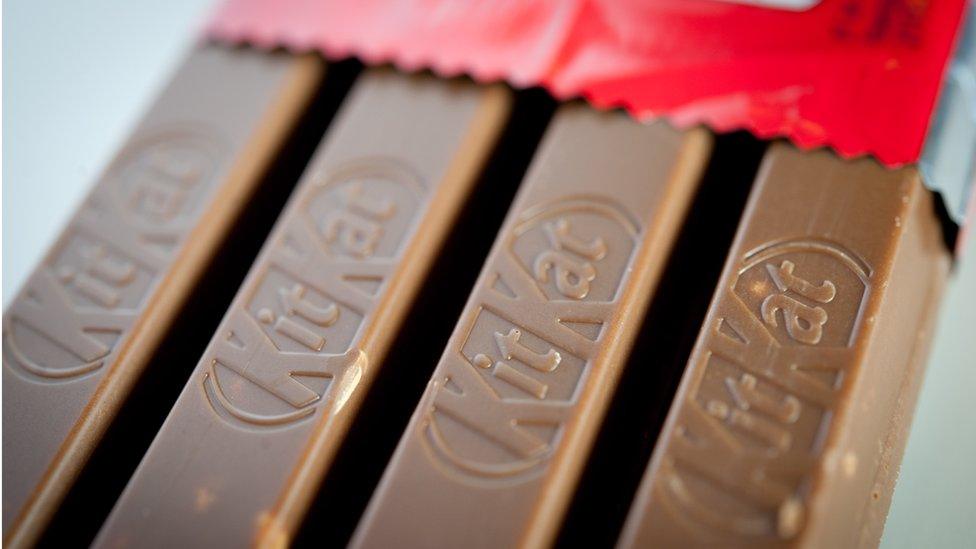Nestle faces setback in KitKat trademark battle
- Published

Confectionery giant Nestle's attempt to trademark the shape of its four-finger KitKat bar in the UK does not comply with European law, a senior European Court lawyer has said.
The opinion of the advocate-general effectively ends Nestle's attempts to trademark the snack.
It also brings to an end the latest chapter in the internecine chocolate wars between Nestle and Cadbury.
The High Court had already rejected Nestle's trademark application in 2013.
Advocate-general opinions are usually, although not always, followed by the European Court judges.
Had its application been successful, Nestle would have been able to prevent competitors making rival chocolate bars of the same shape and size.
But Nestle faced significant opposition to is trademark application from bitter rival Cadbury's and its US owner, Mondelez International.
Chocolate wars
The advocate-general opinion is the latest development in a more than 10-year battle between Nestle and Cadbury fought in the courts, which started when Cadbury tried to trademark the purple colour it uses on its Cadbury chocolate wrappers.
Nestle objected and finally had the original decision allowing Cadbury to trademark the colour overturned in 2013.
Now it appears Cadbury has had its revenge.

Nestle argued that, over time, the four-fingered chocolate bar's physical form had acquired a distinctive character associated with the company since its launch in 1935, and should become a trademark.
It did not seek to trademark the two-fingered bar.
It cited a survey in which 90% of people, external shown a picture of the bar, without any names or symbols embossed on it, mentioned KitKat in their comments.
But a rival bar called the Kvikk Lunsj, meaning "quick lunch", external, launched in Norway in 1937 is available in some UK shops, and although less well known, looks similar.
- Published5 June 2015

- Published4 October 2013
